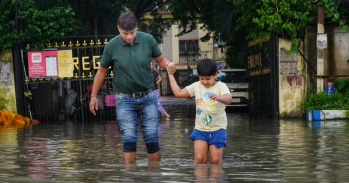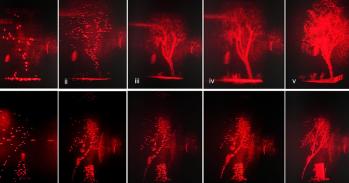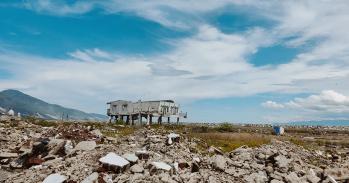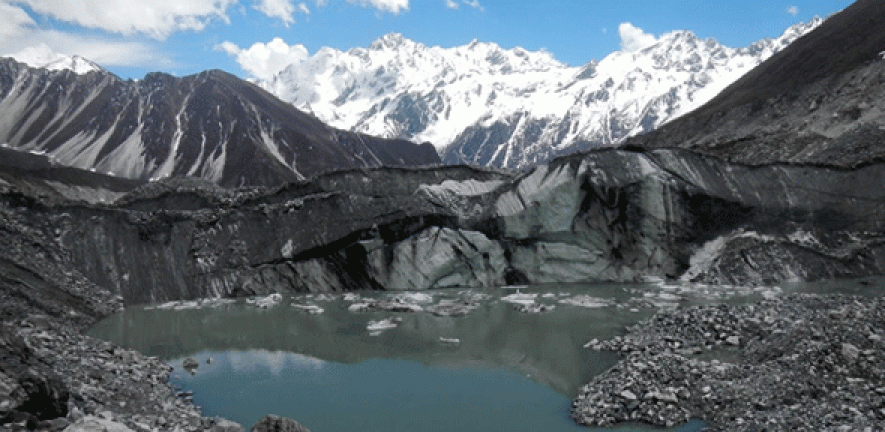
As the death toll continues to rise in Nepal, Senior Lecturer Dr Ian Willis, and PhD student Evan Miles, from the Scott Polar Research Institute contemplate the fate of people in a remote part of the country, where they have been doing research for the past two years.
As the death toll continues to rise in Nepal, Senior Lecturer Dr Ian Willis, and PhD student Evan Miles, from the Scott Polar Research Institute contemplate the fate of people in a remote part of the country, where they have been doing research for the past two years.
We are holding our breath awaiting a clear picture of Langtang Valley. We are hoping for the best but fearing the worst for the Nepali families that reside there.
Ian Willis
As many agencies are now reporting, the death toll associated with the 7.9 magnitude earthquake that hit Nepal on Saturday is likely to rise considerably over the coming days and weeks. On Tuesday it stands at over 4,000 but the Nepalese Prime Minister, Sushil Koirala, announced that it might reach 10,000. The UN declared that 8 million people have been affected, with 1.4 million people urgently needing aid.
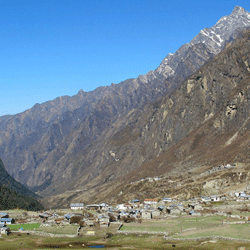 The full scale of the damage will become clear as contact is made with remote settlements away from the capital, which are now largely cut off from communication and supply. In Kathmandu and other urban centres, the greatest cause of injury and death was collapsing buildings.
The full scale of the damage will become clear as contact is made with remote settlements away from the capital, which are now largely cut off from communication and supply. In Kathmandu and other urban centres, the greatest cause of injury and death was collapsing buildings.
But in more isolated, mountainous regions, further problems arose from the shaking ground triggering a range of natural hazards. One such region is the Langtang Valley, 60km north of Kathmandu, where we have been doing research for the last two years.
A recent analysis shows the entire valley would have been particularly susceptible to landslides following the earthquake due to its proximity to the epicentre and the topography of the mountain slopes there.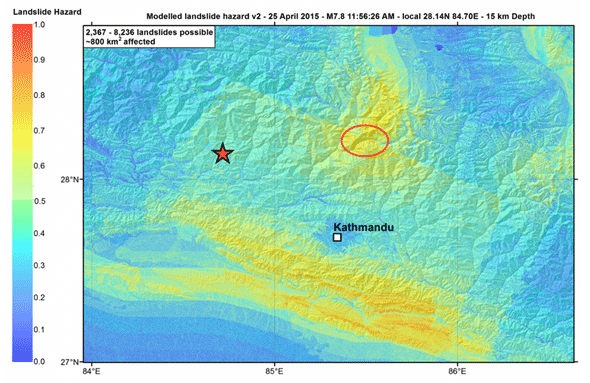
We are exceptionally fortunate not to have been in the area when the earthquake struck. We were in Kathmandu for an International Glaciology Society Symposium in early March.
One of us (Ian Willis) stayed on to do glaciological fieldwork with two other scientists from Cambridge (Dr Hamish Pritchard and PhD student Mike McCarthy) towards the top of the Langtang Valley, returning very recently.
In fact Hamish Pritchard is still in Kathmandu, safe and now helping the UN effort.
The other of us (Evan Miles) was due to fly to Nepal on Sunday and walk to the head of the Langtang Valley this week, but of course his trip was cancelled.
For the past two years, we have been working there with science colleagues from Switzerland, Netherlands and Nepal and aided by a professional Nepali team of guides, porters and cooks.
The overall aim of the research project has been to better understand the climate of the region, and to investigate how the changing climate is affecting the glaciers and the discharge of water in the streams.
This is of huge societal importance, as the people of the valley rely on ground and stream water for their livelihoods – drinking, washing and irrigating crops.
In addition, a small hydro-electric plant was due to be built later this year at the uppermost village in the valley, Kyanjin Gompa, but this will presumably now be put on hold.
Our specific work focuses on improving knowledge about the glaciers of the region. And it is while undertaking our research that we have come to appreciate many of the natural hazards that occur in the area.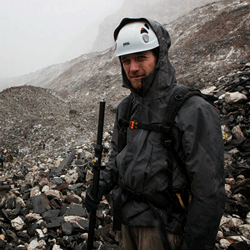
Many of the glaciers in Nepal and elsewhere across High Mountain Asia are covered by debris, which may inhibit the rate of ice melting underneath.
The debris gets onto the glaciers through rockfalls, debris avalanches and mudflows. These are continuous processes, but would have been orders of magnitude more severe during the recent earthquake than anything we ever saw.
Many of the glaciers across the Himalaya and surrounding mountains are nourished by snow avalanches.
Again, these occur regularly (we have both been caught in snow avalanches sweeping down the glacier we work on) but the energy they contain is typically dissipated by the time they reach the valley bottoms.
As the recent footage from the Everest region shows, however, snow avalanches can be particularly large and devastating when triggered by an earthquake.
Video of a snow avalanche that swept down the Lirung Glacier on 20th March 2015. This one was harmless by the time it reached the village of Kyanjin Gompa. Bigger snow avalanches triggered by the earthquake would have been much more destructive. Video by Ian Willis.
Finally, many glaciers in the region are associated with lakes – these form on the glacier surface where they are dammed by ice, or in front of the glacier where they are blocked by moraines (large ridges of sediment ‘bulldozed’ by a formerly more extensive glacier).
The rapid draining of such lakes provides another hazard, causing floods or mudflows to downstream regions. Again, the flooding and mudflows associated with lake dams rupturing is likely to have had a significant impact during the recent earthquake.
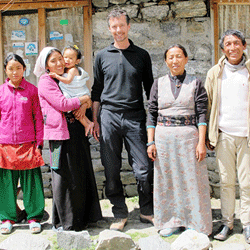 Our field research is on hold at present while we wait to hear the fate of the people of the Langtang Valley and other remote regions of Nepal. But initial reports from Langtang sound very bleak. Eye witness accounts state “From where we were, there was nothing you could see. All the villages were gone,” and “the whole valley has been destroyed”.
Our field research is on hold at present while we wait to hear the fate of the people of the Langtang Valley and other remote regions of Nepal. But initial reports from Langtang sound very bleak. Eye witness accounts state “From where we were, there was nothing you could see. All the villages were gone,” and “the whole valley has been destroyed”.
Helicopter-based photographs seem to confirm that Langtang village has been wiped out by a large landslide. We are busy scouring satellite data to identify zones of the worst impact, but Nepal has been shrouded in heavy clouds and rain since the earthquake inhibiting our efforts.
We are holding our breath awaiting a clear picture of Langtang Valley. We are hoping for the best but fearing the worst for the Nepali families that reside there.
Inset images:
Looking downvalley to Langtang village in May 2014. Reports suggest that this entire village has been buried by a debris avalanche during the earthquake. Credit: Ian Willis.
Preliminary landslide susceptibility map created by Dr Tom Robinson (University of Canterbury). Susceptibility ranges from 0 to 1 with higher numbers indicating a greater chance of landslides occurring. Earthquake epicentre shown with a star. Langtang Valley is circled.
Evan Miles on the extremely debris-covered Lirung Glacier in 2014. Credit: Eduardo Soteras.
Lake on the surface of Lirung Glacier. The rapid drainage of such lakes may cause flooding downstream and may have contributed to devastating mudflows during the earthquake. Credit: Evan Miles.
Ian Willis with the owners of the Shangri-La Guest House, Langtang. L-R: Saylie, Tsering Dolma Lama, Karma, Ian, Nima, Samden Dindu. Photo taken May 2014. This family and many others are in our thoughts.

The text in this work is licensed under a Creative Commons Attribution 4.0 International License. For image use please see separate credits above.

